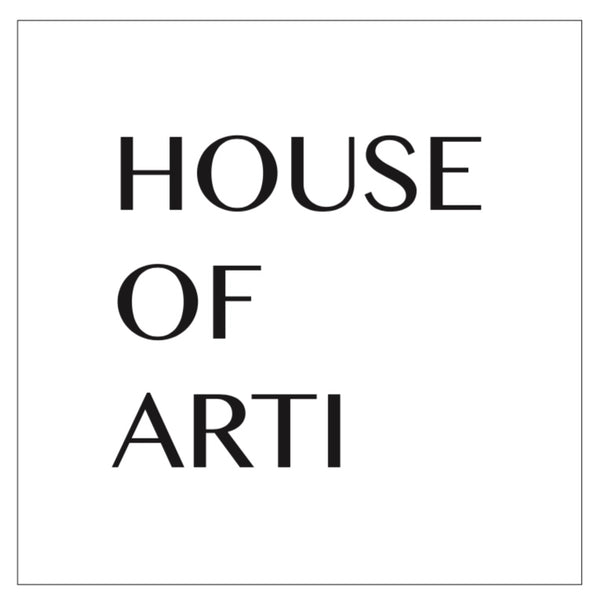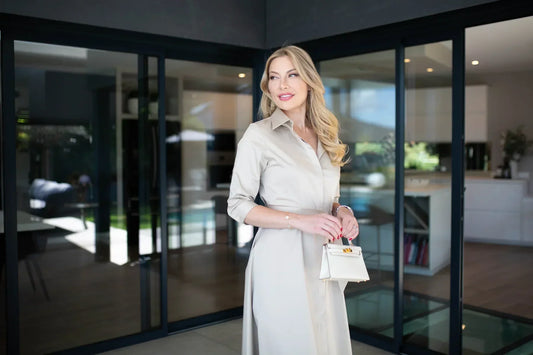
Petite vs Regular Size Clothing: Understanding the Difference and the Need for Balance in Fashion
Share
Have you ever been in a store and noticed that some clothing labels have the word “petite” on them, while others don’t? If you’re under 5'5"/ 1.65 m tall, you might have wondered why there are so few options tailored to your height. Understanding the difference between petite-size and regular-size clothing is crucial, especially when navigating the fashion world. In this post, we’ll explore what makes petite clothing different from regular sizes, why there’s a disparity in availability, and why the fashion industry needs to strike a better balance.
What is Petite Size?
Petite-size clothing is specifically designed for women who are 1.65 meters (5’5”) and under. Contrary to what some may think, the term “petite” has nothing to do with body shape or size—it’s all about height. Petite clothing is not just shorter in length; it’s proportioned differently to accommodate the unique needs of shorter women.
Here are some key characteristics that define petite clothing:
- Shorter Inseams: Petite pants and jeans come with shorter inseams, ensuring they fit properly without excessive fabric bunching at the ankles.
- Higher Armholes: Petite shirts, tops and jackets feature higher armholes for a better fit, preventing the sleeves from looking baggy or too long.
- Narrower Shoulders: Petite dresses, blouses, and jackets often have narrower shoulders, allowing the garment to sit correctly on the body.
- Shorter Sleeves: Sleeves are shortened to complement the overall proportions of petite women, avoiding the need for constant alterations.
Even though a significant percentage of women are 5'5"/ 1.65 meter or shorter, petite clothing remains underrepresented in the market. This lack of availability forces many women to choose regular-sized clothing, which often requires alterations or doesn’t fit well. The fashion industry’s focus on taller models/ bodies and designs means that petite options are often overlooked, despite the demand.
* Check out the very first petite clothing brand to showcase on the runway at New York Fashion Week: House of Arti makes history.
What is Regular Size Clothing?
Regular-size clothing is typically designed for women who are between 1.66 meters (5’5.4”) and 1.8 meters (5’11”) tall. This category dominates the fashion industry, with the majority of clothing lines catering to this height range. Because the average height of women in many countries falls within this range, regular-size clothing is the most saturated market in the fashion world.
One of the reasons regular-size clothing is so prevalent is the perception that taller women represent an “ideal” or more desirable figure. This ideal is often reinforced by fashion advertising and media, which frequently showcase models within this height range. As a result, clothing for taller women is more widely available, and the designs are often more diverse and trend-driven.
However, the dominance of regular sizes in fashion comes at a cost. Women who do not fit into this height range—either because they are shorter or taller—often struggle to find clothing that fits well without extensive tailoring. This can lead to frustration and a feeling of exclusion from mainstream fashion.
Why There Needs to Be a Balance in Fashion
The fashion industry has long been driven by trends and ideals that don’t necessarily reflect the diversity of women’s bodies. While regular-size clothing dominates, the needs of petite women, as well as those who are taller than average, are often neglected. This imbalance is problematic not just from a practical standpoint, but also in terms of representation.
A more balanced approach to fashion sizing would:
- Promote Inclusivity: By offering a wider range of sizes, the fashion industry can better serve women of all heights, making them feel included and valued.
- Reduce the Need for Alterations: When clothing is designed to fit a broader range of body types, customers can enjoy a better fit right off the rack, saving time and money on tailoring.
- Encourage Diversity in Fashion: Showcasing a variety of body types and heights in advertising and on the runway would help break down the narrow ideals that have dominated fashion for too long.
Understanding the difference between petite-size and regular-size clothing is key to navigating the fashion world. Petite clothing is more than just shorter lengths—it’s proportioned differently to fit the unique needs of shorter women. Regular-size clothing, on the other hand, caters to a taller demographic and dominates the market. However, there’s a growing need for a more inclusive approach to fashion sizing that balances the needs of all women, regardless of height.
By recognising and addressing these differences, the fashion industry can move toward a future where every woman can find clothing that fits her body perfectly, without compromise.
Now that you know difference between petite-size and regular-size, we invite you to explore our designer curation of petite clothing for extra-petite and petite women between 1.4m-1.59m / 4f 7.1-5f 2.6". We’ve been named Petite Clothing Brand of the Year for a reason—our collection is designed to offer the perfect fit and style for every petite woman. Visit our store and discover why “House of Arti” is the go-to brand for petite women's fashion.
--
Shop the best petite clothing brand for shorter women here at the House of Arti:
Shop your garment size (XS, S, M, L, XL) within your height range on our product pages.
- Extra-Petite: 1.40m - 1.49m | 4f 7.1" - 4f 11"
- Petite: 1.50m - 1.59m | 4f 11.1" - 5f 2.6"
Shop all our styles here --> New Arrivals



